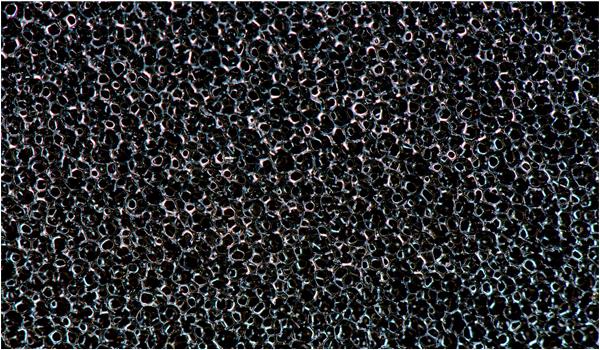Start - Research topics - POB3.5 Advanced methods of material surface modification
POB3.5. Advanced methods of surface modification of materials

The service lifetime of machine elements, devices, structural elements, tools, and many other products that are used in various aspects of life, significantly depends on the progress that is made, mainly thanks to advanced methods and techniques of surface modification. The positive effects of surface modification on the properties of materials are observed in areas such as modern catalytic, photoactive, medical, surface-functionalized materials for various applications. This is a direct result of the fact that the functional properties of products and their components depend not only on the ability to transfer mechanical loads nor on physical and chemical properties, but very often also on the structure and properties of their surface layers. Undoubtedly, the achievements of the research teams from the Silesian University of Technology are successfully in line with the development trends in this area of Materials of the Future.
In the field of advanced methods of surface modification of materials, the selected areas, at the same time determining the basic directions of research, include, for example, modern materials for use in heterogeneous catalysis. Catalysts are currently used in over 90% of industrial processes, contributing to the increase in their efficiency and reduction of costs. Decisive for the course of the reaction with the use of catalysts, are the phenomena occurring on the atomic scale, at the boundary between the catalyst surface and the reaction environment - gaseous or liquid. The research topics carried out in this area are in two directions. The first one is to obtain catalysts in the form of nanoparticles with dimensions of single nanometers, evenly distributed on the surface of a carrier with a highly developed surface. Studies aimed at the production of stable and selective monatomic catalysts are particularly promising. The increase in the active surface is also achieved by changing the shape of the catalysts (nanowires, nanostars, nanoframes). The second direction, in turn, involves the modification of the surface of carriers, primarily made of carbon. The conditions of their surface (degree of defect, presence of functional groups) determine the degree of dispersion and stability of nanocatalysts as well as the electronic properties of the entire catalytic system.
Another example of research in this area is Photoactive Organic Layers. Thanks to its electrophilic properties, singlet oxygen reacts with unsaturated carbon-carbon bonds, neutral nucleophiles or anions, which makes it interesting for applications in the synthesis of fine chemicals, water purification or Photodynamic Therapy (PDT). The use of singlet oxygen as an oxidizing agent in synthesis usually results in an increase in the efficiency and selectivity of the reaction, and additionally, the use of solar energy as a factor for activating the photosensitizer, allows for a significant reduction in the cost of the process. In addition, singlet oxygen has been shown to have strong bactericidal properties. In recent years, the possibility of using organic photoactive layers as antibacterial coatings has been widely studied.
To eliminate undesirable responses of the immune system, hybrid modification of the surface of materials in direct contact with tissues are being used. Laser micro/nano modification of the surface of biomedical materials is used to create a hierarchical texture that allows modification of their surface properties, e.g. surface free energy and wettability. It allows for the creation of a highly biocompatible, hydrophobic layer with great potential for intra-organism application, e.g. in the circulatory system, skeletal system and within the stomatognathic system. On the other hand, the development of the surface of biomaterials dedicated to bones is conducive to osseointegration processes. In addition, as a result of laser ablation on the surface of treated titanium alloys, the formation of titanium oxide is intensified, which contributes to an increase in their corrosion resistance. The combination of this type of treatment with the production of advanced thin PVD coatings allows for selective treatment of micro-areas, guaranteeing, for example, a controlled surface development or concentration gradient of elements constituting the coating, which improves selected properties of implants in the body's environment. Obtaining functional implants with better properties is also possible thanks to surface modification by Atomic Layer Deposition (ALD). The use of oxide layers in biomedical applications has attracted interest due to the high chemical stability, satisfactory biocompatibility and possible high antibacterial potential of these oxide layers. However, at the microscale, surface topography is also an important factor and can influence cellular response. In general, the larger the effective (true) surface area, the higher the degree of bone-to-implant adhesion - a positive relationship between surface roughness and implant anchorage strength. Another method of modifying the surface of implants dedicated to bones is anodic oxidation. It is mainly used for machining titanium and its alloys. As a result of this process, oxide layers can be produced depending on the potential application of the implant. In the case of implants with a short service life, a classical process is used in which the oxide layer created imitates the substrate. A high-voltage variant of this method, the so-called plasma electrochemical oxidation (PEO), is used in the case of implants that permanently fuse with the bone. The PEO process makes it possible to produce porous oxide layers, enriched with electrolyte components, e.g. Ca, P, Si, i.e. elements that build bone. Simultaneously, bactericidal agents (ZnO, Ag, Cu, etc.) can be added to the electrolyte, thanks to which a highly bioactive and bacteriostatic oxide layer is obtained. The PEO process can also be successfully used to modify other materials, significantly increasing their corrosion resistance. These are mainly aluminum and magnesium alloys, which are some of the most important materials used in the aviation and automotive industries.
Likewise, thin-layer nanofiber coatings with unique optoelectronic properties are currently being intensively studied in many research centers around the world. The electrospinning technique enables the production of thin polymer and composite coatings. This technique can be used to obtain not only nanofiber coatings, but also independent materials. The most frequently produced and tested nanofiber coatings for use in optics and electronics include polymer matrix materials with the addition of metal nanoparticles, metal oxides and carbon materials, as well as ceramic materials based on metal oxides, e.g. TiO2, ZnO, SiO2, SnO2, Bi2O3. Materials of this nature have a very wide application potential, including for example, anti-reflective coatings, lasers, integrated circuits, gas detection sensors, diodes, modern photovoltaic cells, biosensors, and filtration membranes.
The issues of shaping the structure and properties of surface layers in laser surface treatment processes are widely studied and used. Enhancement of the properties of the surface layer of ductile iron in the laser alloying process is focused, for example, on the synthesis of composite layers reinforced in-situ with titanium carbide (TiC). An innovative approach to controlling the above-mentioned process of synthesis of composite layers in-situ, consists of controlling both the thermal conditions in the weld pool and the chemical composition of the liquid metal of the pool by appropriate selection of the chemical composition of the alloying material. The selection of the chemical composition of the alloying material considers both its impact on the morphology and chemical composition of the TiC reinforcing phase, the phase composition of the matrix material of the layer, and the chemical homogeneity of the layer by influencing the intensity of convection movements in the weld pool. Equally large scientific and application potential exists for other methods of surface modification in high-energy processes: surfacing, alloying, remelting and surface hardening with laser, plasma and advanced arc methods.
An experienced team of scientists from the Silesian University of Technology, is carrying out research in the field of advanced methods of surface modification of materials, successfully conducting world-class basic research and developing technologies that influence progress and set new directions and development trends, while guaranteeing great application potential.









